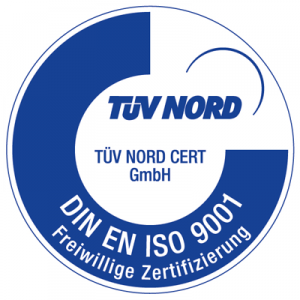ECHA and companies in the EU
09.11.2020 ECHA and companies have contact at different levels. The European Chemicals Agency (ECHA) implements key EU legislation on chemicals. In addition to health and environmental protection, it regulates competition and innovation. ECHA also provides companies with comprehensive information on chemicals. And: companies must provide ECHA with information on manufactured and imported substances. ADT-Zielke advises your company on how to deal with the ECHA regulations. Please ask us.
Current dates
Waste Framework Directive: As of 5 January 2021, suppliers of certain articles are obliged to submit information to ECHA for the SCIP database. REACH Regulation: From December 2020, companies must meet certain deadlines for updating registration dossiers with ECHA. Then the new implementing regulation of the European Commission of 12.10.2020 with a 60-day deadline comes into force. Companies must update their registration dossiers if the following changes occur: chemical data, tonnage range, company information. In most cases the update period is set at three months and in more complex cases up to 12 months.
ECHA and Companies – REACH
REACH requires companies to collect information on the properties and uses of substances – and to assess the hazards and risks posed by substances. This applies to substances that companies manufacture or import in quantities of over one ton per year. Companies must submit the information to the ECHA by means of a registration dossier. Manufacturers and importers of the same substance must submit their registration together.
ECHA as source of information
ECHA provides a comprehensive source of information on chemicals manufactured in or imported into Europe. The following information on chemicals is collected: their hazardous properties, classification, labelling and information on their safe use.
SCIP database of ECHA
SCIP is an ECHA database. SCIP was set up in accordance with the requirements of the Waste Framework Directive (WFD). SCIP (Substances of Concern In articles as such or in complex objects (Products)) contains information on substances of concern in articles and products – available to waste operators and consumers. Companies must submit information on articles containing a certain percentage of substances of very high concern (SVHCs) to ECHA. Through the SCIP database, information on these substances is available throughout the life cycle of products and materials, including the waste phase.
Seven sections of ECHA
ECHA is divided into seven areas in terms of legislation. REACH Regulation: The aim is to improve the protection of human health and the environment from risks posed by chemicals. The regulation applies directly and uniformly to all member states without having to be transposed into national law.
CLP Regulation: The CLP Regulation ensures the classification and labelling of chemicals. The aim is to ensure that workers and consumers in the EU are clearly informed about the risks associated with chemicals.
BPR Regulation: The Biocidal Products Regulation (BPR) aims to improve the functioning of the biocidal products market in the EU – while ensuring a high level of protection for humans and the environment.
PIC Regulation: The (PIC Regulation) regulates the export and import of certain hazardous chemicals. It also lays down obligations for companies that wish to export these chemicals to non-EU countries.
CAD and CMD: The guidelines on chemical agents (CAD) and on carcinogenic and mutagenic substances (CMD) define limit values for exposure at the workplace (OEL values). There is also a special asbestos guideline with its own OEL value for asbestos. The aim is the safety and health protection of employees. The member states must implement the limit values for occupational exposure adopted by the EU into national law.
CAD: The Chemical Agents Directive (Directive 98/24/EC) sets out the minimum requirements for protection against the effects of chemical agents in the workplace or risks arising from the use of chemical agents at work. It determines indicative, binding OELs and biological limit values. CMD: The Carcinogens and Mutagens Directive (Directive 2004/37/EC) sets the minimum requirements for protection against the effects of carcinogens and mutagens at work. It defines protective measures, including preventive measures, and exposure limits.
Waste Framework Directive: The directive lays down decisive measures for recycling management. The aim is to prevent and reduce the harmful effects on the environment and human health in the generation and management of waste. The use of resources is to become more efficient. A database is to contain information on articles containing substances on the candidate list of substances of very high concern. In accordance with the REACH regulation, the Candidate List will be regularly expanded to include new substances.
POP Regulation: Persistent Organic Pollutants (POPs) remain in the environment over the long term and pose a risk to human health and the environment. The POP Regulation prohibits and restricts the production, placing on the market and use of POPs. It aims to minimize the release of POPs, for example as an industrial by-product. It also ensures the safe management of stocks and the environmentally sound disposal of POP waste.


